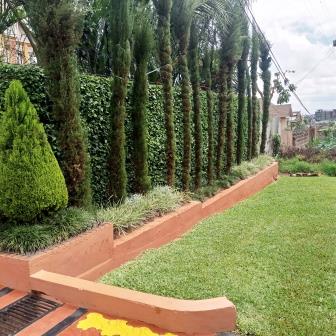The evergreen ficus tree family is huge and varied. The diversity in species makes them appear completely different trees for the new gardener. Indeed it is hard to believe that the rubber tree you grow in a pot indoors is related to the sacred giant Mugumo tree (Ficus natalensis), revered by the Agikuyu of Central Kenya.


The variation in appearance is mostly due to the different ecological regions in which individual tree species have grown and adapted. For instance the rubber tree (Ficus elastic) was found growing in the jungles of Burma and Assam in the early years of the nineteenth century while the Mugumo is a tree native to Central Africa. In this article we ill focus more on the Ficus elastica and its variants although their management can also apply to other types of ficus like Ficus benjamina and ficus liryata
For years, the rubber tree was harvested for its latex-bearing sap, mostly used for erasers before attention shifted to a more productive tree in the Hevea genus. The most popular Ficus tree is the Ficus elastica decora, a mutation of the original of the Ficus elastica that was found in Java, Indonesia. Decora has large maroon leaves that open from a red sheath.
Why are rubber trees indoors so popular?
Rubber trees are popular for both indoors and outdoor gardens because they tolerate either shade or sun. Their glossy leathery large leaves occurring in various colours of dark green, deep maroon or marked with yellow, cream or white create fascinating beauty. F.elastica will often develop aerial roots that give it a unique appearance, adding a tropical touch to your interior space. You can keep them at the size you want by feeding them sparing, overfeeding results into very large trees. They thrive in humid conditions although they will tolerate the dry conditions normally found in homes. Their light requirements are also favourable. Bright light is ideal but they are adaptable to low light too.
The only thing rubber trees are fussy about is the water. The soil has to be kept barely moist. If they get to much water or too little, the leaves turn yellow and drop off. Many people tend to overwater their indoor plants, and for rubber trees you can guard against this by growing it in a small pot that won’t hold too much water that will drown it. Indoors, rubber trees prefer warm temperatures. When placed in cold environments they go into semi dormant stage-they are alive but hardly growing.
What makes for a straggly rubber tree with leaves forlornly clustered at the top?
You bought a top foot rubber tree yes, but it has been growing. When a rubber tree gets sizeable, any problem with water or light combined with the trees growth pattern will result into a plant with a bare stem. At these stage its time to rejuvenate the plant or get new offspring.
Propagation of rubber trees
First you can simply cut the plant back at the height you’d like to have new growth begin. You will see white sap oozing out but this is normal. Water the remaining part sparing to avoid dampening the soil. Soon new growth will emerge below the point of pruning. Gradually increase the water supply. Your tree should bounce back much neater, bushy and all glossy.

However you can go the easy way by air-layering if you do not wish to have a bare stem. Select some nice branches that are firm with nice leaves. Makes incisions (cuts), tying potting soil and moss around the cuts in a plastic sheet. Your branch will start developing roots at this spot. You can then cut it off and plant in a new pot.
Rubber trees also lend themselves well to stem and tip cuttings although these methods are slow. Cut the stem or tip and simply insert it into the soil.
Problems with Rubber Trees indoors
Care for your rubber tree indoors doesn’t involve much as long as you watch your watering. Regularly wash or wipe the leaves to remove dust and help your plant breadth. Once in a while, get it out into the rain and let the rains wash away dissolved salts from the pot.
Diseases are rarely a problem with rubber or Ficus trees. Root rot usually results from too much watering or a soil mix that doesn’t drain well. This also results in yellowing of leaves and leaf drop .Too little light, dry air or cold drafts can cause leaf loss. Occasionally you may encounter mealy bugs but these can be washed off with soap and water.
Be careful though about the sticky white sap. It irritates the skin and stomach if eaten. Keep pets away and children away from the sap.


Leave a Reply